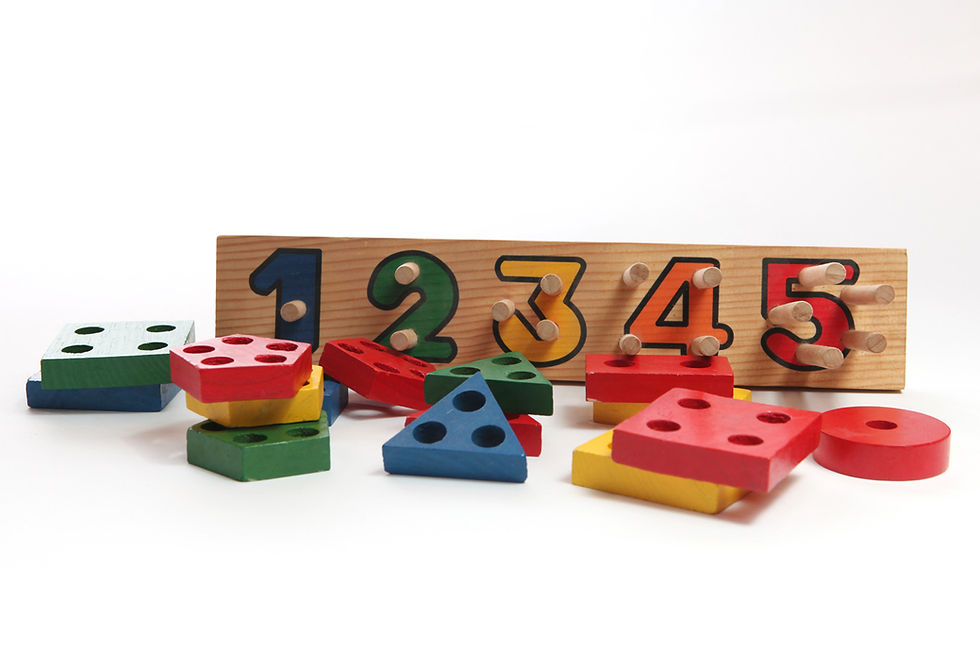Tips for Teaching Maths
- Patricia Mezu, M.A.Ed.
- Jul 31, 2017
- 2 min read

It's always interesting to meet parents of preschoolers. I think it's safe to say that the majority of parents have the best in mind when it comes to educating their children. That process starts at home.
When it comes to teaching maths I've noticed that one of the first things parents think about is teaching number recognition i.e. symbols. Once children from age 2 plus (or thereabouts), are able, they are taught to recognise numbers one, two, three etc.
This is not the best way to start, so here are some tips.
Songs
This is one of the easiest and most natural ways to introduce mathematics - language. We tend to sing songs to our children from the moment of birth and in many cases, even in utero. This is a fairly straightforward point. Singing songs to young children is always a good idea; be more intentional - incorporate some maths.
A few examples will suffice. I have chosen English, however, please feel free to use your home language:
Five Currant Buns
Five Little Ducks
One, Two, Three, Four , Five, Once I Caught a Fish Alive
There Were Ten in The Bed
Quantity - how many?
Once children are ready, introduce 'counting' in simple and easy to sustain ways. For example:
How many eyes do you have - chidlren can easily touch their eyes (gently); one at a time.
How many feet do you have?
How many fingers are there on your right(or left) hand?
Once mastered, this can develop in so many ways. For example:
How many tyres are there on the car?
How many apples did we buy today?
How many windows are there in the kitchen?
These simple teaching methods, can easily be extended, long before children are introduced to symbols. Ideally, children should be counting quantities confidently, before symbols are introduced. This will give them a clear advantage in the long run. At a later stage they will learn to match quantities and symbols.

Mathematical Language
Yes, it always comes back to language, when teaching young children!
This can be taught in different ways. However, being intentional with language is pivotal for progress. In the home and preschool environment, familiarise yourself with the shapes all around you. Rectangular tables, doors and shelves; circular clocks; spherical footballs; square windows; cuboid blocks.
Think about vocabulary - 'more than'; 'less than'; 'the same as'.
Stories:
This is, simply, something to get you started.
Keep counting!
Patricia Mezu is the Director of Professional Minds FZ LLC, a Dubai based educational consultancy specialising in early childhood education. www.prminds.org










Comments